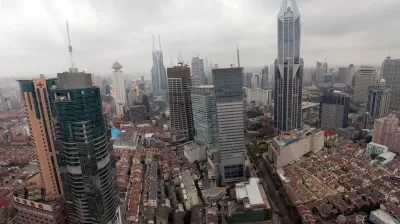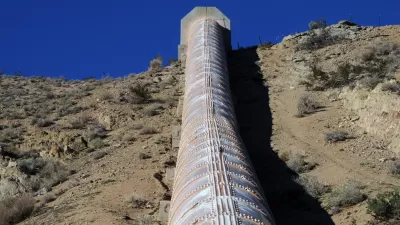After a period of modernization and urban growth unrivaled in human history, several forces promise a slump, or at least a slowing. Maybe it's time to improve existing cities, not keep building new ones.

Whatever your opinion of China's government, it cannot be denied that the country has undergone a miraculous transformation over the past several decades. Pumped up by global and regional trade, the country's cities have absorbed rural migrants in the hundreds of millions.
As Adam Minter writes, "For a while, seemingly all a local government had to do to inspire growth was kick some farmers off their land, build an industrial park and offer tax breaks to the first factory willing to open up." But that might not last too much longer, for several reasons.
The first is demographic. "In the 1970s, China had a surplus of young, under-employed workers in its countryside. That's no longer the case. The working-age population has been in decline since 2011, and the country's birthrate continues to drop."
In addition, the impetus to move to cities has faded somewhat. "Today's workers also aren't nearly as interested in moving away from home as past generations were. Last year, China's migrant population fell by 5.68 million -- the first decline in three decades. Conditions in the countryside have improved markedly in recent years, and rural incomes are rising faster than urban ones, thanks to decades of infrastructure investment and the growing reach of e-commerce."
All things considered, it's unlikely Beijing will meet its goal of boosting the urbanization rate to 60 percent by 2020. But then again, it's China.
FULL STORY: Has China Reached Peak Urbanization?

Alabama: Trump Terminates Settlements for Black Communities Harmed By Raw Sewage
Trump deemed the landmark civil rights agreement “illegal DEI and environmental justice policy.”

Planetizen Federal Action Tracker
A weekly monitor of how Trump’s orders and actions are impacting planners and planning in America.

The 120 Year Old Tiny Home Villages That Sheltered San Francisco’s Earthquake Refugees
More than a century ago, San Francisco mobilized to house thousands of residents displaced by the 1906 earthquake. Could their strategy offer a model for the present?

Indy Neighborhood Group Builds Temporary Multi-Use Path
Community members, aided in part by funding from the city, repurposed a vehicle lane to create a protected bike and pedestrian path for the summer season.

Congestion Pricing Drops Holland Tunnel Delays by 65 Percent
New York City’s contentious tolling program has yielded improved traffic and roughly $100 million in revenue for the MTA.

In Both Crashes and Crime, Public Transportation is Far Safer than Driving
Contrary to popular assumptions, public transportation has far lower crash and crime rates than automobile travel. For safer communities, improve and encourage transit travel.
Urban Design for Planners 1: Software Tools
This six-course series explores essential urban design concepts using open source software and equips planners with the tools they need to participate fully in the urban design process.
Planning for Universal Design
Learn the tools for implementing Universal Design in planning regulations.
Clanton & Associates, Inc.
Jessamine County Fiscal Court
Institute for Housing and Urban Development Studies (IHS)
City of Grandview
Harvard GSD Executive Education
Toledo-Lucas County Plan Commissions
Salt Lake City
NYU Wagner Graduate School of Public Service





























